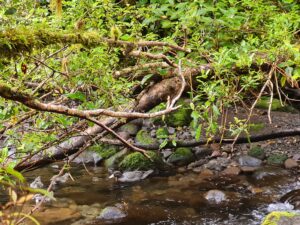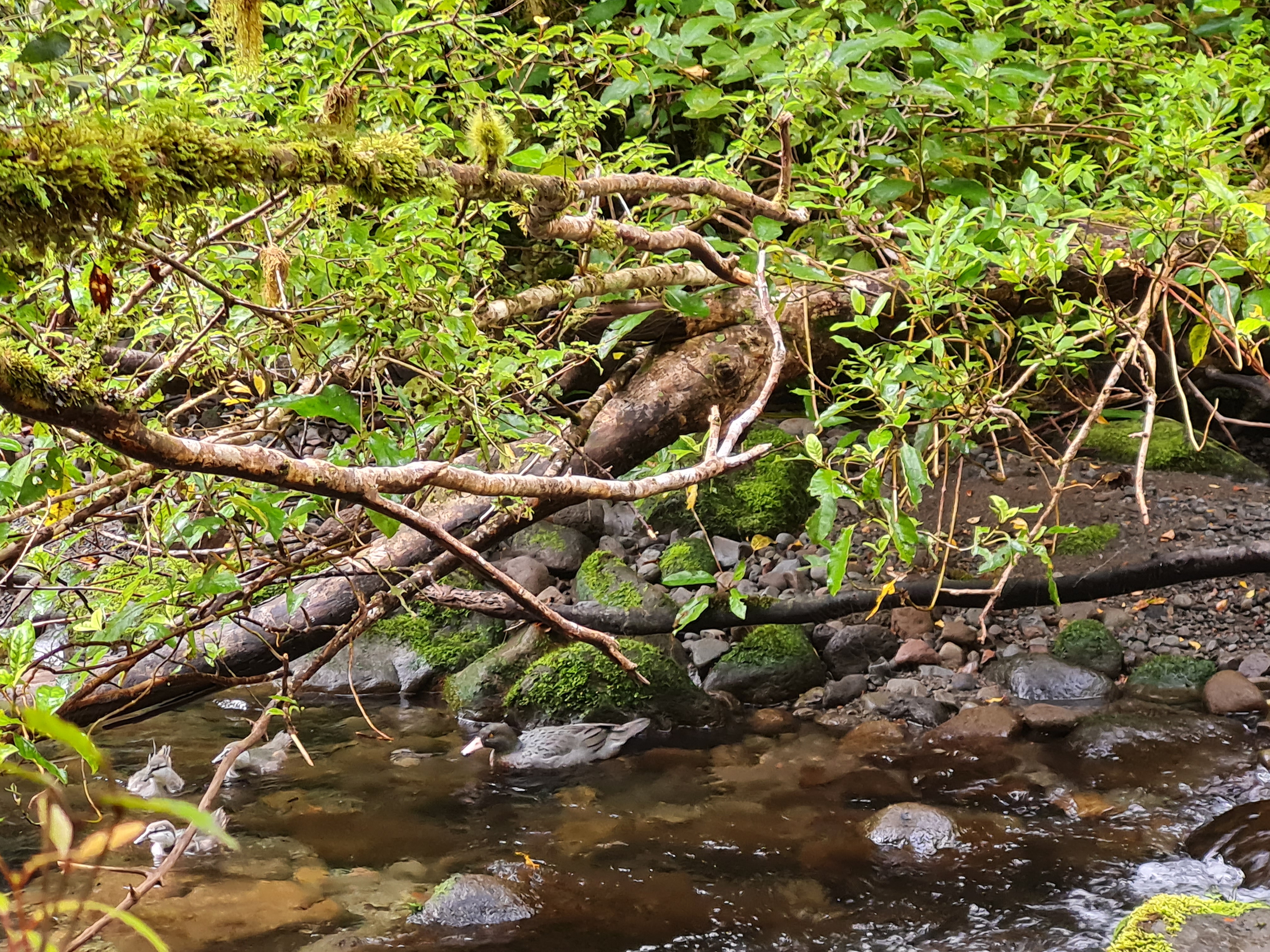Record whio duckling count on Taranaki Maunga

A DOC survey shows whio duckling numbers in Te Papa-Kura-o-Taranaki have hit a record high, with whio now a regular sight on Taranaki Maunga.
For the last nine years surveys have been conducted along eight rivers with specially trained conservation dogs. A dog and its handler seek whio along each river twice each breeding season, with each river taking an average of 6 hours to survey.
DOC biodiversity ranger Joe Carson conducts the annual surveys with her conservation dog, Pip. Joe says she’s thrilled with the great result.
“Ongoing trapping and last year’s application of aerial 1080 have helped protect female whio during their critical nesting period.
“It’s been a huge collective effort from volunteers, Taranaki Mounga Project and DOC staff to reduce stoats and other predators across the maunga. The work of our partners across the wider maunga also supports whio. Together, we’re bringing nature back.”
Settled weather last spring kept rivers stable and low, providing an extra boost to help the young birds survive to fledging.
Whio are a unique duck species found nowhere else in the world and are known as an icon of New Zealand’s backcountry rivers.
The whio population on Te Papa-Kura-o-Taranaki is thriving with regular sightings by trampers on many of the hikes.
“It’s such a privilege to witness this ancient species in the wild,” says Joe.
“So, look out for whio and be sure to give them space so they aren’t stressed, they’re part of what makes New Zealand special.”

